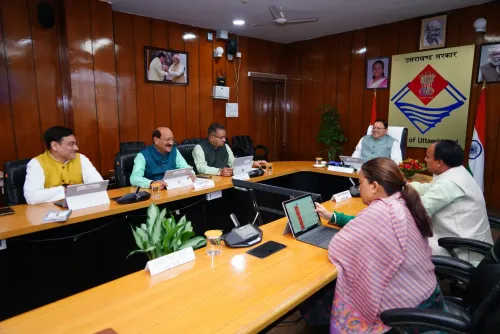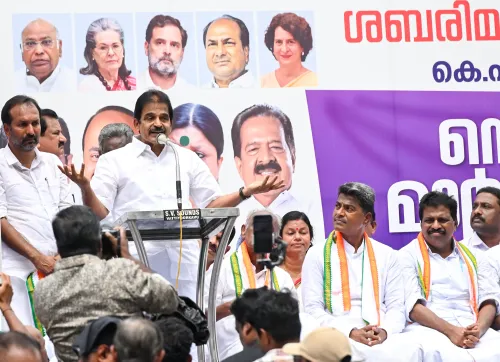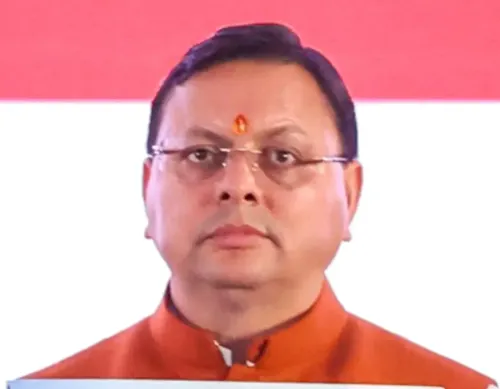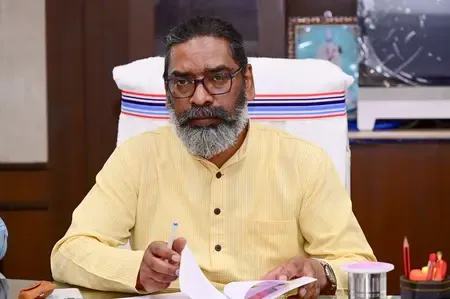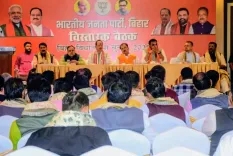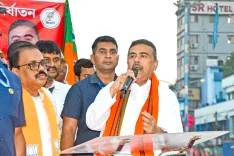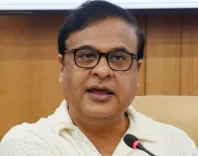What Did Delhi Minister Parvesh Verma Discover About Yamuna Water Quality in Palla Area?
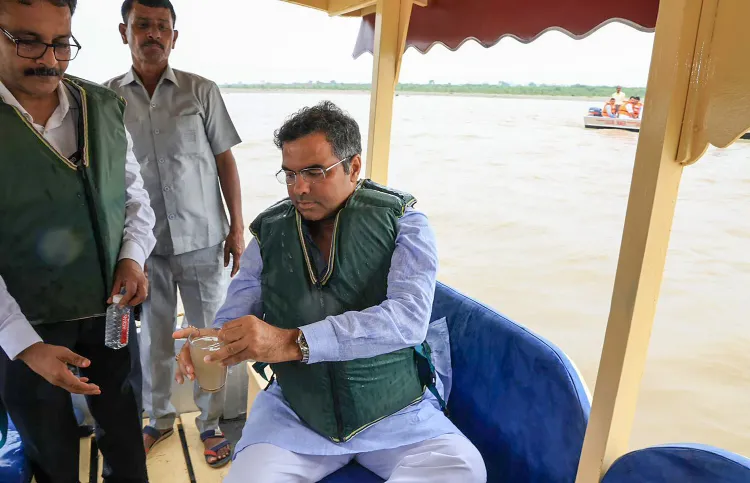
Synopsis
Key Takeaways
- Yamuna water quality is clear in Palla but deteriorates as it enters Delhi.
- The Delhi government is actively managing rainwater drainage during the rainy season.
- Not all instances of water accumulation constitute waterlogging.
- A new master plan for the drainage system is underway.
- Preliminary reports suggest improvements for the Najafgarh basin.
New Delhi, July 13 (NationPress) Delhi's Water Minister Parvesh Verma participated on Sunday in a crucial initiative aimed at collecting water samples from the Yamuna River in the Palla area of north Delhi, as confirmed by an official.
"We conducted an inspection of the Yamuna in the Palla area, where it enters Delhi. The assessment of water levels and surrounding conditions was carried out using a boat alongside departmental officials," the Minister’s office stated.
An official remarked that the water samples gathered from the Yamuna will undergo quality testing and will guide the development of strategies to enhance the river’s condition throughout its passage in the capital.
The water in the Palla region appears completely clear, but as it flows into Delhi, it transforms into a dark and polluted state, according to an official.
Regarding rainwater drainage, an official from the Irrigation and Flood Department explained that the Delhi government is proactively managing rainwater flow during the rainy season.
"By showcasing images from 3-4 locations, the Aam Aadmi Party is attempting to mislead the public into believing that the entire city is flooded. However, this is not the case everywhere," the statement read.
The official asserted that the drainage system is functioning adequately in most areas, but its age causes difficulties in managing rainfall exceeding 50 mm in a single day.
The statement further clarified that not every instance of water accumulation qualifies as waterlogging. "When rainwater recedes within a few minutes, it is not considered waterlogging. True waterlogging occurs when water remains for 4-5 hours," it explained.
Just a day prior, the Minister revealed plans for a new draft master plan aimed at updating the city’s 50-year-old drainage system, which was last revised in 1976.
Delhi’s drainage infrastructure relies on three basins: Najafgarh, Barapullah, and Trans Yamuna.
The government has received preliminary reports suggesting improvements for the Najafgarh basin, while reports related to the other two basins are still pending.

